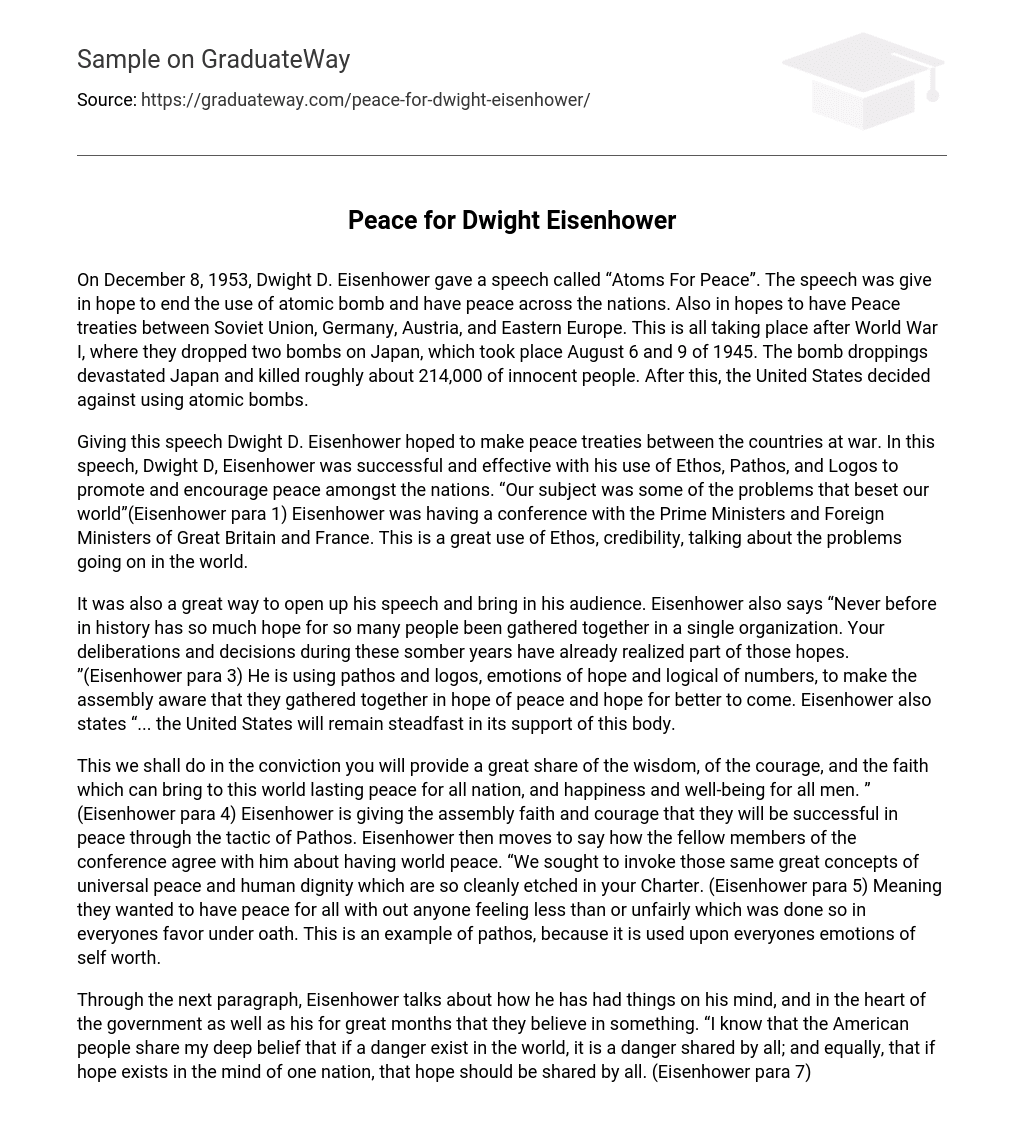In his speech titled “Atoms For Peace” on December 8, 1953, Dwight D. Eisenhower aimed to halt the use of atomic bombs and promote global peace. The main goal was to establish peace treaties involving the Soviet Union, Germany, Austria, and Eastern Europe in response to the devastating impact of atomic bombings during World War II. Specifically, Japan experienced immense suffering when two bombs were detonated on August 6 and 9, 1945, resulting in the deaths of about 214,000 innocent individuals. Consequently, the United States pledged not to employ atomic bombs.
In his speech, Dwight D. Eisenhower aimed to create peace treaties between the warring nations. He effectively utilized Ethos, Pathos, and Logos to advocate for and inspire peace among these countries. According to Eisenhower (para 1), the focus of the conference he attended with the Prime Ministers and Foreign Ministers of Great Britain and France was on the various challenges plaguing our world. This demonstrates his credibility (Ethos) in addressing the pressing global issues.
Using both pathos and logos, Eisenhower effectively opened his speech by acknowledging the hope that the audience had gathered together for. He expressed that never before in history had so much hope been gathered in a single organization. By referring to the audience’s deliberations and decisions during difficult times, he emphasized that their hopes were already being realized. Furthermore, Eisenhower conveyed the United States’ unwavering support for the organization, appealing to both emotions and logic.
Eisenhower expresses his belief that the assembly will contribute wisdom, courage, and faith in order to achieve lasting peace and happiness for all. This emotional appeal is used to inspire confidence in the success of their peace efforts. He also acknowledges the agreement of fellow conference members on the importance of universal peace and human dignity, which aligns with the principles outlined in their Charter. This demonstrates their commitment to ensuring equality and fairness for all, appealing to everyone’s emotional connection to their own self-worth.
Eisenhower discusses his belief that both the American people and the government share his conviction in something important. He emphasizes that if there is a danger in the world, it affects all nations and should be a concern for everyone. Similarly, if one nation holds hope, that hope should be shared by all nations (Eisenhower para 7). This statement showcases logical thinking and serves as an effective tactic.
Eisenhower then shifts his focus to atomic warfare, highlighting how its development has progressed so rapidly that people worldwide have some knowledge about it (Eisenhower, Dwight. “Atoms for Peace.” American Rhertoric. American Rhertoric, 2011. Web. 27 Apr 2012.).
“EDITORIAL: Old and new nuclear perils.” Japan Times 06 Aug. 2011: Newspaper Source. Web. 29 Apr. 2012.).





